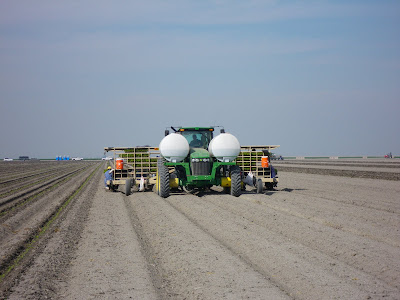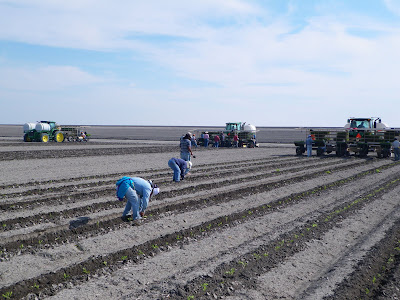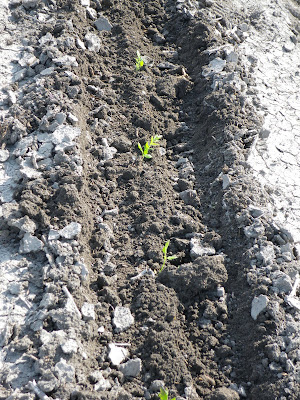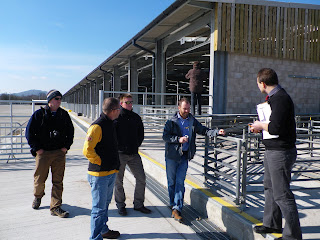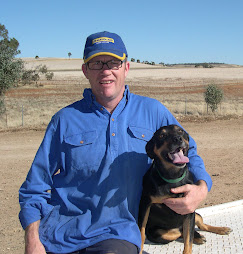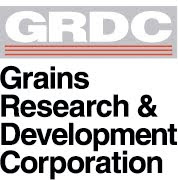Ryan & Tim Fraser
Tim and his son Ryan run a mixed farm with sheep, cherries and cropping. The sheep are a composite breed of a maternal white faced line and a black faced terminal sire. They are currently running around 6000 ewes and are achieving 135% lambing. The lambs are all finished on stubble of a variety of crop residues around the San Joachim Valley, tomatoes, melons and lucerne after hay cuts. The lambs dress out between 36 – 40 kilograms. They are all very lean. We are going to see Superior Lamb Abattoir where they get their lambs killed. The enterprise is currently running with 6 to 7 full time equivalents. Here again we see that the cheap labour is underpinning the agricultural economy. As good as some subsidies.
Ryan's Rams
Ryan's Chewrries in Blossom with Snow Peaks
California Agriculture
The size and scale of the agriculture here continues to amaze me and our next was no different. At the bottom of the valley is a large lake delta system, or there was. Now runs a series of large canals for irrigation.
Drain Boswell
JG Boswell
JG Boswell Company is a family company started in 1920 who farm 103,000 of this country. The original Boswell has a book written about him, “The King of California”. There was a dry year and Boswell stared farming around the edges and kept doing so and reclaimed large areas during summer with banks and levies.
Now there are four quarters around a central aqueduct. There are four managers who oversee the operations for those. The farm specialises in only a few crops and this year will plant;
• Cotton 53,000 acres
• Tomatoes 30,000 acres
• Lucerne Hay 10,000 acres
• Safflower 10,000 acres
The Tomato Seeder Coming Closer
6 Row Planter
Senorita Planting Tomatoes
Coming Along Behind to Fill Holes
Finished Tomatoes
The lucerne and safflower are grown where they wish to reclaim the land. This is the lowest point of the valley and they get high water tables and this brings salt up with
They have an allocation & storage for 500,000 acre feet of water. This equates to roughly 500,000 meg’s and in a normal year they usually use about 350,000 megs, so they sell the rest for market price of $75. (Do the math)!!They will only sell to other farmers and not the government or the environmentalists. They are extremely worried about the environmental lobby as it is gaining strength. I think they should be proactive and work with them.
They have two paste making plants and produce over ½ million tonnes of paste. The paste is stored in 3’ x3’ bags in large wooden crates and shipped all over USA and exported.
All of the water that is extracted in the process is put through a primary cleaner and then utilised through centre pivots. All of the tomato is planted by contractors and takes 75 days to complete. We were lucky enough to see it in action. The tomatoes are irrigated by underground drip lines. They last close to eight years and maybe pulled up and relayed elsewhere. Most of the other crop are flood irrigated or with pivots.
They have a complete workshop which does all the servicing of the machinery and rebuilds etc. They also have their own spare parts department. The engineering shop which design new machinery and modifications has 12 people working in it.
Field Service Truck with all Required Lubes and Fuels
I must say that it was a very impressive farming business.
Emerald Energy
We went out to the back blocks and visited Ray Allen who has a Doctorate in Plant Science. He has perfecting a way to graft roots or plants utilizing amino acids as a way of transfer the DNA. He has worked on a number of plant species, but the ones we saw, was a cross between Pawlonia and Black Locust.
Powlonia x Black Locust Trees
Ray commented on why he decided on these two varieties
• Root grafting very simply (once you have right amino acid mix).
• Establish relatively easily
• Get a lot of root growth to graft more plants
Roots From 4 Months Growth
• Black Locusts leaves are quick small and Pawlonias are very large. Resultant leaf midsized.
• Rapid growth.
• Very high bio-fuel matter /acre (100tonnes / hectare)
Ray told us he has orders for 500,000 for a number of countries including South Africa, Kenya and Indonesia. The plant material goes through a gasification process and enters the generator to produce 1.8 Mw/ hour. The current planting is only small size but he is planning to plant a further 110 hectares. The increased sized of the plantings and new generator will be able to generate enough power to 1800 homes for all their needs.
A couple of spinoffs he is looking into is the plants deterrent to both flies and mosquitoes with a neutralising effect of malaria. I am not sure about this but it would be nice.
Beautiful & Sweet Smelling Flower
The whole meeting had an air of just another new enterprise with a slick pusher, I hope I am wrong













